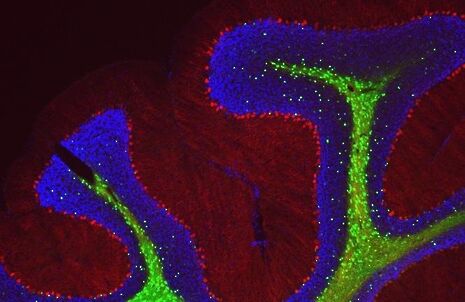For autism therapy, is changing the brain the way forward?
New studies show that neuromodulation can increase social behaviour in autism – but this may not be the best way to improve lives

Recently published in Nature Neuroscience, the work of Stoodley et al describes how a part of the brain previously considered to be only responsible for movement seems to also be important in assisting social interaction. Differences in this part of the brain, the right crus of the cerebellum, can be seen in autistic adults, and are used to create autistic-like behaviours in mouse models. It is these observations that have led to the latest experiments of neuromodulation – the alteration of such neuronal circuits – to increase social interaction in these mouse models.
This, naturally, brings to the mouths of researchers talk of the prospect of a new type of autism therapy. The use of such “treatments”, however, is potentially problematic. It is undoubtedly a good thing to promote skills and abilities which would lead to a better quality of life for the individual. However, autism isn’t a tumour that sits in the brain waiting to be cut off; it is a fundamental part of the way one sees the world and interacts with it. This means that attempts at changing the brain to modulate autistic behaviour could have unintended side-effects, and also pose issues of altering identity.
“Neuromodulation therapy could result in children receiving treatment without truly being able to understand that to which are they consenting”
This not the first time that brain alteration technologies have been used to adjust traits associated with autism. For example, there has been early research on the use of transcranial magnetic stimulation (TMS) to improve someone’s ability to recognise emotions. Patients – notably including John Elder Robison – have described this therapy as a mixed blessing. Robison, never having experienced such an ability to recognise emotional cues, describes initially finding them overwhelming, compromising his relationships with close friends and family. It was only over the course of several years that he would adapt to cope with this newfound way of connecting emotionally.
Many secondary reports on this research tentatively present the treatment as a therapeutic option for autistic children. This is in contrast with the original research prompting such reports, which represents autistic adults as well as children, and describes the neuromodulation therapy as being successful in adult mice.

This focus on children is perhaps indicative of a systematic bias in the presentation of autism research in the media. Individuals with autism do not disappear at the age of 18, and there exist autistic adults who are trying to secure jobs, to manage relationships, and conduct tasks which seem trivial to many people, but often provide a constant series of day-to-day challenges. Indeed, rates of isolation, unemployment, and mental illness are unusually high among people on the autism spectrum. This does not need to be the case. It is not uncommon for young adults to hit a ‘services cliff’, when they can no longer access the services offered by school and college, and struggle to find alternative ones. The right support can be vital in helping to navigate a new and confusing world.
Arguably, the millions of pounds spent on gene splicing and brain scanning could be used to investigate ways to decrease the employment gap, to provide reliable points of contact for autistic people for help, and to find ways to tailor existing mental health treatments for difficulties associated with autism. Or, even better, used to make such support a reality. One very real benefit of increasing the support and research for autistic adults is that it would further empower them to have an increased ability to decide what sort of therapy they find suitable. When treatments are provided primarily to autistic children, this means that the direction of treatment is decided upon by the parent. This can result in parents attempting many different sorts of therapies on the child, some of which may be actively harmful. Similarly, if a neuromodulation treatment is promoted as a therapy ‘for autistic children’, this could result in children receiving such brain-altering therapy without truly being able to understand that to which are they consenting.
The proposed autism therapy is fortunately a far cry from an inconceivable ‘cure’. If it becomes more than a mouse study, it must be done only in the knowledge that it would improve the quality of life of the individual. Even then, there must be full and free-willed consent from the person undergoing the intervention, with appropriate support to help the individual adapt to any new ways of thinking and behaving
 Comment / Plastic pubs: the problem with Cambridge alehouses 5 January 2026
Comment / Plastic pubs: the problem with Cambridge alehouses 5 January 2026 News / Cambridge businesses concerned infrastructure delays will hurt growth5 January 2026
News / Cambridge businesses concerned infrastructure delays will hurt growth5 January 2026 News / New movement ‘Cambridge is Chopped’ launched to fight against hate crime7 January 2026
News / New movement ‘Cambridge is Chopped’ launched to fight against hate crime7 January 2026 News / AstraZeneca sues for £32 million over faulty construction at Cambridge Campus31 December 2025
News / AstraZeneca sues for £32 million over faulty construction at Cambridge Campus31 December 2025 News / Uni-linked firms rank among Cambridgeshire’s largest7 January 2026
News / Uni-linked firms rank among Cambridgeshire’s largest7 January 2026








